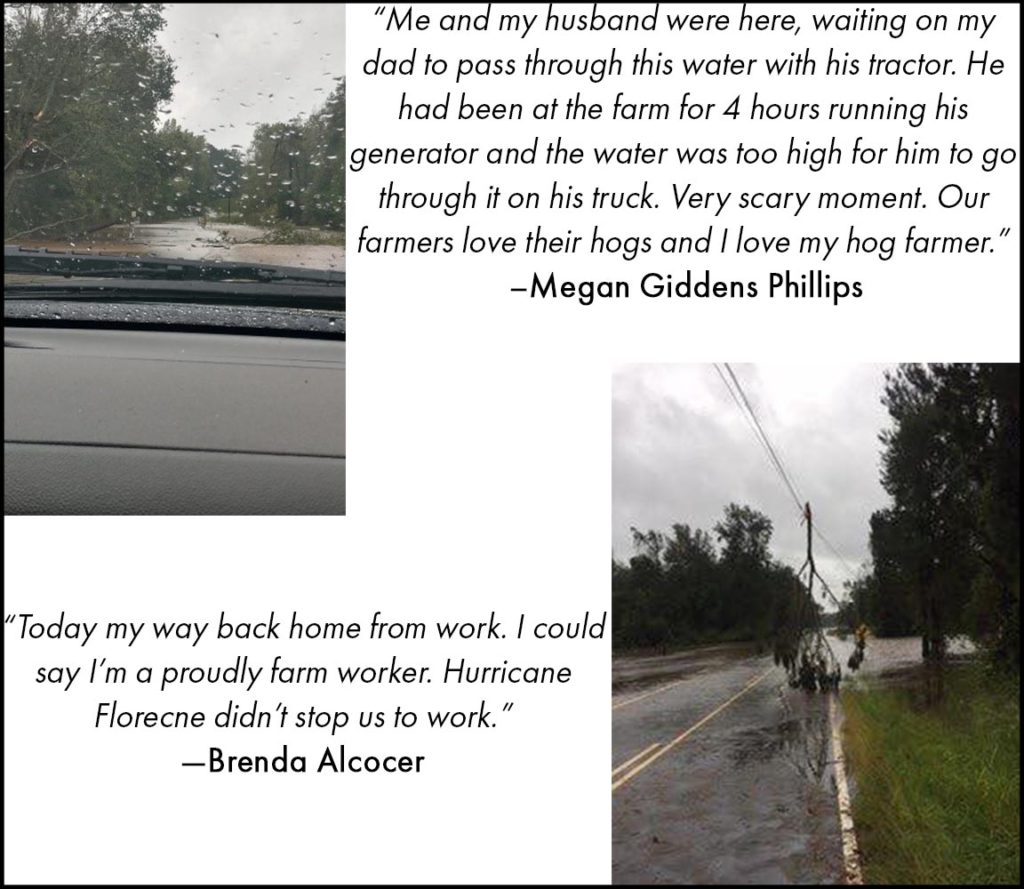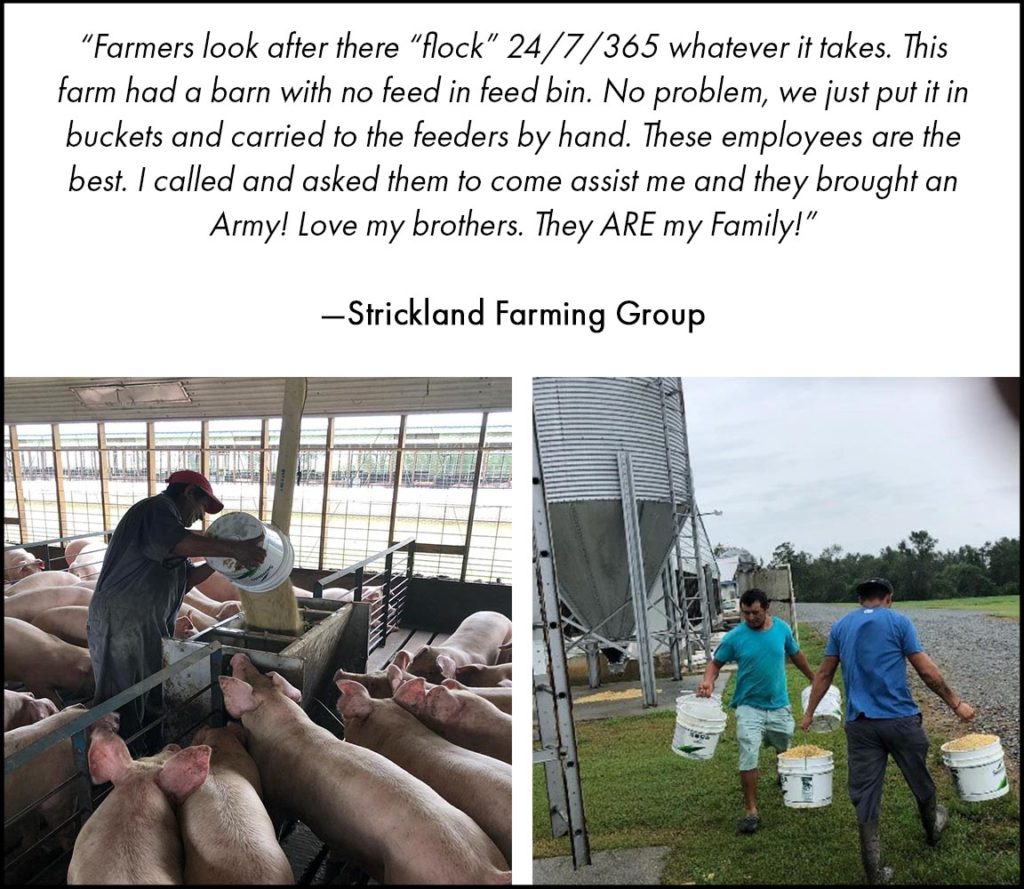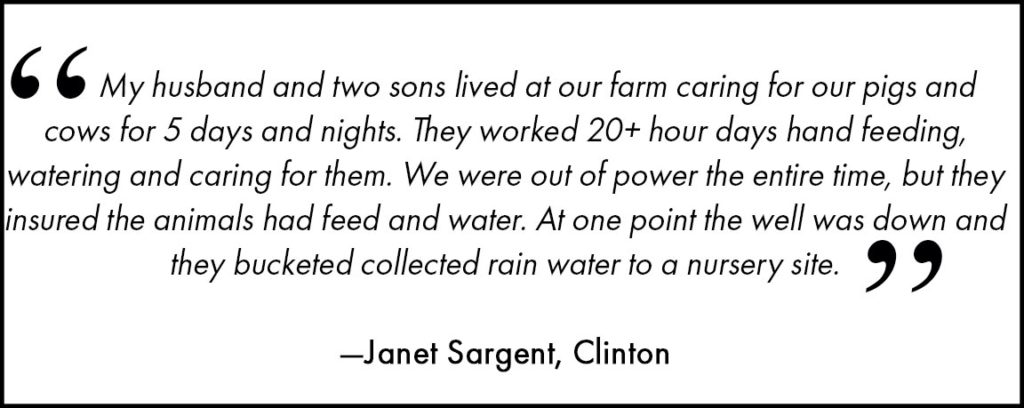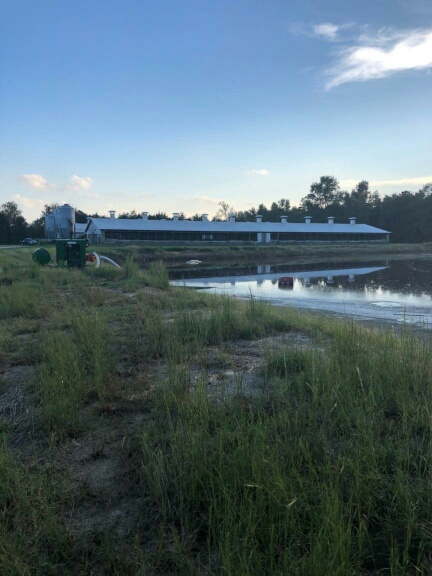An acorn must have fallen on the head of Waterkeeper Dana Sargent during Hurricane Florence. Because ever since the storm first began approaching North Carolina in September, the Waterkeepers have been running around screaming that the sky is falling!
Or, in their words, North Carolina’s family farmers are destroying our environment with toxic waste.
When an acorn landed on the head of Chicken Little, she famously incited a panic. As one telling puts it, “she disturbed a whole neighborhood by her foolish alarm.”
That sounds familiar.
The Waterkeepers would like you to believe that every lagoon in eastern North Carolina is overflowing with hog manure. In a recent column in The News & Observer, Sargent and the Waterkeepers said that “hog waste literally blanketed huge parts of the state and fouled our drinking water” during Hurricane Florence.
And The News & Observer editors didn’t think twice about publishing such nonsense.
Perhaps they need a refresher on the moral of the Chicken Little story: Don’t believe everything you hear.
After all, this isn’t the first time the Waterkeepers have made blatantly false claims about the impact of Hurricane Florence. Right after the storm, they proclaimed there was “insanely toxic” contamination found near Duke Energy’s coal ash ponds in Wilmington.“
Hurricane Florence Unleashes Toxic Coal Ash,” blared Earthjustice. And The News & Observer duly reported the news: Environmentalists say Cape Fear ‘insanely toxic’, repeating the Waterkeeper’s claims that arsenic levels were 71 times higher than the state safety standard for water quality.
What happened next? The state’s Department of Environmental Quality had to set the record straight, explaining that flooding from Hurricane Florence “did not contaminate the Cape Fear River,” as The N&O reported.
DEQ Secretary Michael Regan had to do the exact same thing in response to concerns about hog lagoons during the flood.
“We are really focused on our wastewater treatment facilities because there are probably orders of magnitude more human waste that has escaped these wastewater treatment facilities than what has escaped these hog lagoons,” he said.
Yet, the Waterkeepers continue to ignore the facts and continue to make the same false claims against our family farmers.Here are two relevant facts from Hurricane Florence that aren’t in dispute:
Despite eight trillion gallons of rain and the record-shattering floods that followed, more than 98% of North Carolina’s lagoons worked exactly as intended and suffered no significant impact from Hurricane Florence.
Municipal wastewater treatment plants spilled tens of millions of gallons of human waste into our rivers, creeks and stream when they were overwhelmed by the floodwaters. And human waste poses significantly higher risks than animal waste (thus the concerns shared by the state’s top environmental official).
The Waterkeepers have no credibility left. They keep screaming that the “sky is falling!” and the facts keep proving them wrong.
Years ago, another activist group issued a report claiming that the Neuse and Cape Fear rivers were among the ten most endangered rivers in America. The N&O prominently posted that story, too. American Rivers, the group behind the report, later admitted that “the rankings aren’t a scientific assessment of river quality,” but part of a coordinated effort being pushed by the Waterkeepers to influence state lawmakers.
That’s three times they have yelled “the sky is falling!” — and three times they’ve been proven wrong by the facts. How can anyone still believe their claims are credible?The next time a newspaper editor hears a Waterkeeper blasting North Carolina farmers, they should exercise tremendous caution — and ask if an acorn recently fell on their head.

































